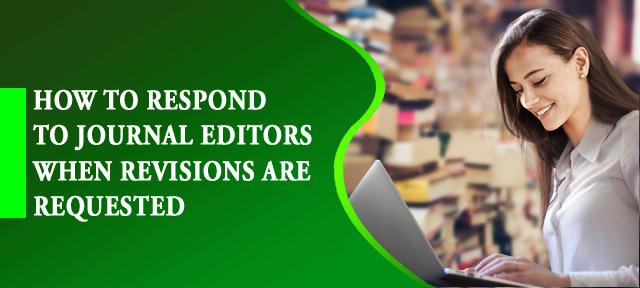Submitting a manuscript to a scientific journal for publication is usually followed by a tense period of awaiting a response from the editor. The editor may respond in three possible ways; (i) Reject without an invitation to re-submit or outright rejection; (ii) Conditional acceptance, where you are asked to make minor changes; and (iii) Outright acceptance or Accept as is, where changes are not required, but might be suggested.

While the third option is the most sought and the first most dreaded, for all practical purposes, the second option is the most common and acceptable response one can expect. However, how you proceed with this response is also critical to ensure that the open process finally leads to a successful publication.
Here are some tips on how to respond to an editor seeking revisions:
Read and re-read: After the initial surge of emotions subside, read and re-read the response from the editor. It is by now ascertained that the journal is asking for revision in the review paper. However, you need to understand what are the grounds of revision required and the extent of work involved.
If requested revisions are related to the content (the methods, data, and argument) that perhaps questions the basic premise of the paper, you might have to re-write the whole review paper all over again. Whereas, if the changes suggested are about the language or formatting and editorial styles that is an easier task in which a professional service provider may be able to provide valuable assistance.
Map the revision: It is advised to map the changes requested, says in an Excel file. Write whether the input is from peer-review or a suggestion from the editor. Also note what kind of edit it suggests (data work, methodology, or language-specific, formatting issues), etc. Then comes the cool and calculated process of ascertaining (a) what all revisions are feasible at your end (b) the timeline required to do the changes and resubmit.
Open communication channels with the editor: It is advisable to respond to the editor’s correspondence within a few days with a polite response acknowledging the receipt of the suggestions and outlining your next intended actions.
As an author, you may choose to accept all the revisions or may choose to act on some of them. In your response, clearly state the changes you are now embarking on and the reasons for not working on some suggestions. Keep in mind that often the editor is simply forwarding suggestions from a peer-review to you and is not the one taking a call for revision. It is pointless to ‘argue’ with an editor. Instead, more professional terms of engagement it advised.
In this initial response, you may share the estimated timeline for revisions and a revised date by when you expect to make a resubmission. This helps even the editor set timelines and establishes a clear, professional communication between you and the editor.
An academician’s relationship with scientific journals goes a long way over their career, and it is the editor who is the main point of contact. Therefore, it is important to build good professional and cordial relations with the editor(s) even if you both may not agree on certain matters.

